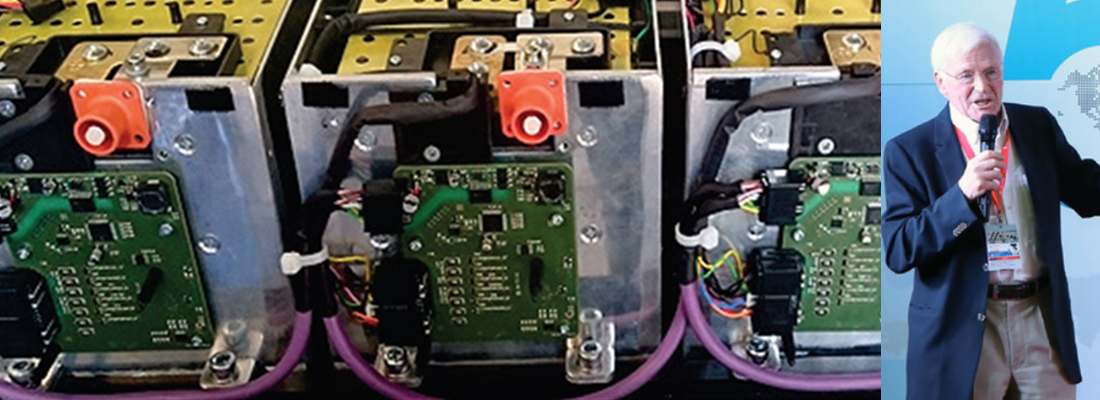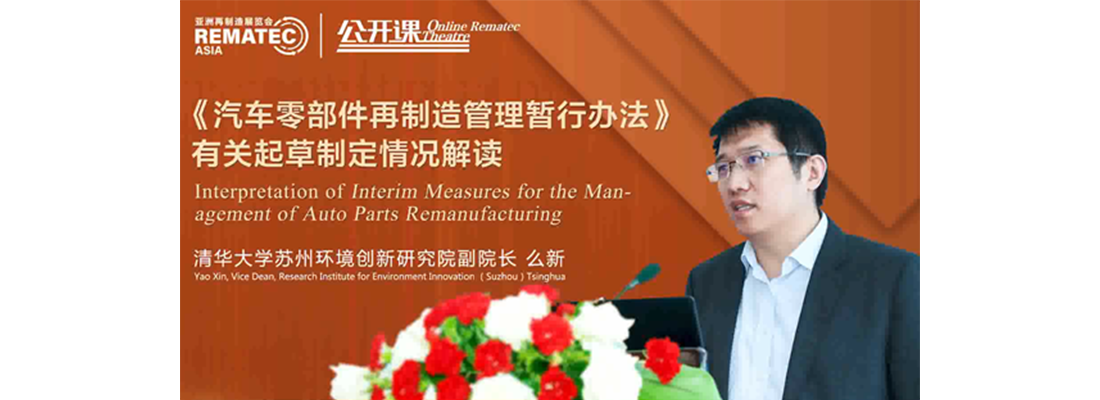What's that coming down the road?
"Now is the time to decide if you are part of the electrification movement or not. That is not to say you can’t live off of the product already in the field for another ten years, but how do you survive after that?”
No-one watches the remanufacturing market as closely as the people who depend on it. With that in mind, Denise Rondini asks half a dozen reman professionals what they see in store over the coming year – and what will be the key influences in the market.
The early part of a year is an ideal time to take stock – and when you want to know what’s what, it makes sense to go to the experts. So what do some of the remanufacturing industry’s biggest names think will be happening during 2018? “We expect the market demand for reman and rebuilt transmissions to rise versus 2017,” says William Fouch, manager, aftermarket marketing at Eaton. He says this is because “the robust new truck production levels over the past decade include transmissions that are just entering into their first repair cycle”. Joe Kripli, president of APRA, agrees that new truck production over the past couple of years bodes well for remanufacturing. “We have had a relatively high number of vehicles - roughly 16.5 million - entering the market,” he says. However, the nature of some products has changed - complicating things for remanufacturers. “If you are a starter and alternator remanufacturer, a large number of vehicles are now entering the market with a stop/start function,” he says. What this means is that where previously there was both a starter and an alternator now there is one combined unit. “Hence less product entering the market,” Kripli explains. On the plus side, he adds, “the unit is more costly”.
Rise of electrics
Kripli also cites electrification as having a big influence on remanufacturing. “Every vehicle built is averaging 35 ECUs per vehicle,” he points out. “Take a conservative prediction of 16 million vehicles produced in 2018 times 35 ECUs per vehicle and you get 560 million ECUs entering the market in 2018.” Kripli says now is the time for remanufacturers “to look at the future and decide if you are part of the electrification movement or not. This is a big step for many and an investment. That is not to say you can’t live off of the product already in the field for another ten years, but how do you survive after that?” While there has been growth in recent years of the number of trucks which have automated transmissions, Fouch says Eaton will continue to focus its efforts on the manual transmission side. However, it is now placing additional emphasis into remanufacturing the electric components of automated transmissions such as ECUs and other items related specifically to automation. Looking beyond 2018, Fouch says: “We expect prolonged growth for the automated side of our business as the acceptance rate for automated transmissions continues to gain momentum.” John Chalifoux, president and COO of MERA, The Remanufacturing Association, says remanufacturers are optimistic about new opportunities heading into next year “and remain confident that the remanufacturing market will continue to be stable”. However, although MERA thinks the industry is poised for additional growth in 2018, that growth “may be more muted compared to recent years”. Many MERA members are adding to their production and inventory capacities because they see expanding opportunities in remanufactured technology and electronic components and as a result of greater OE awareness of the benefits of remanufactured goods for the OE service channels. Chalifoux adds: “As more buyers and fleets implement green initiatives, remanufacturing is poised to represent even greater value to the end-user, thus increasing the demand for remanufactured goods.”
Showing value
In addition to the number of vehicles in the market making conditions right for remanufacturing, Henry Foxx, director of remanufactured products at Bendix, says that momentum has come “from showing the value reman brings to the marketplace”. In addition, he says there is an increased comfort level from the consumer in using reman products and that bodes well for reman growth in 2018. He adds that remanufacturers will have to continue to work to “clearly differentiate between reman, rebuilt and clones. There will be an increased focus on understanding the differences and showing the benefits of reman over clones”. Bendix will continue to launch remanufactured versions of its OE products including a focus on offering more electronic components to the marketplace: “We will also be looking at ways to increase the life of the core and will continue to evaluate additive manufacturing processes.” Other reman figures also believe that such technologies could begin to make an impact. Shawn Zwicker, director of global operations for Cummins new and ReCon parts, says: “In 2018 we are likely to see advances in additive technologies and those advances becoming more readily available, making the business case stronger for their implementation on the remanufacturing floor. More research will help manufacturer determine which additive technologies, other appropriate metallurgy or manufacturing processes are best for restoring work surfaces in a robust and cost-effective manner.” John Blodgett, vice president of sales and marketing for MacKay & Company, says his market research firm is not forecasting any significant changes in the use of reman products in 2018: “We have seen some drop-off in recent years of reman which appears to be driven by lower-cost new options which are more price competitive.” He says this first occurred with rotating electrical products: “Fleets decide for the smaller differential in price they are willing to use new and avoid the hassle of dirty cores and the associated paper work.”
North America perspective
When it came to asking our panel of experts what factors will have an influence on remanufacturing in the US and Canada, the answers were intriguing. Foxx says core policies will have the biggest impact on reman this year: “One of the challenges, and one of the things we have to deal with is making more customer-friendly processes to return core.” Even though the differences between remanufactured parts and clones have been documented, the fact that clones do not require cores is seen as a plus by consumers – but he insists: “There is a significant trade-off in the performance level between the two types of products.” Zwicker believes that “within North America, our customers have a good awareness and understanding of remanufactured products”. However, outside North America, customers have a different perception of what reman means. “Broader consumer acceptance of remanufacturing outside of North America would be great for the industry,” he suggests. A good economy is the thing Fouch believes will help drive more reman versus repaired units being sold: “For freight haulers time is money, so the quicker the truck is able to get back on the road the quicker it's making money for the owner.” Automation and additive manufacturing are two areas where Foxx sees opportunities for remanufacturers. He believes companies will have to determine how to “play into the increased focus on vehicle electrification and autonomous vehicles”. In future, the need to remanufacture these electronic components will be a significant opportunity for reman, he concludes. Blodgett says the future trend in reman in North America “is going to be for reman providers to sell the green attributes of reman versus new, tout the resources saved by using reman versus manufacturing a new product”. Historically the conversation/pitch of reman has been the cost savings, he adds. “As that advantage gets squeezed for some components, I think you will hear more about the green attributes.”
2018: MERA looks ahead
MERA members have identified six areas that they feel could impact their operations:
- Market shifts in product demand
Opportunities will arise with electronics and electrically-assisted components, batteries and electrification. - Competition from imported new products
As new aftermarket parts production shifts to international locations, low cost, newly-manufactured components can, at times, compete with remanufactured products. “To combat this, reman companies should focus on how their products restore the OE part, with known fit and function, back to same-as-new or better condition,” MERA’s John Chalifoux says. - Policy and regulations
Uncertainty about US government policy regarding the North America Free Trade Agreement (NAFTA) along with international trade barriers from foreign countries means remanufacturers face some unknowns at this time. In addition, regulation of certain reman markets like DPFs, engines and other emissions-related parts are a concern. - Availability of cores
The global availability of cores remains a chief concern among remanufacturers. Chalifoux says: “New developments in reverse logistics and supply chain management for core supply would help drive remanufacturing growth.” - Lack of pricing power
Reman companies do not have the flexibility they would like when it comes to pricing, Chalifoux says, because of factors like increased competition, projected softer growth and changing market dynamics. - Contract/warranty terms and conditions
Remanufactured components, as replacement parts, are sometimes subject to over-zealous warranty terms. “Additional education and awareness of remanufacturing quality will be instrumental in developing confidence with buyers,” Chalifoux concludes.
Share your remanufacturing stories with us
Do you have an innovation, research results or an other interesting topic you would like to share with the remanufacturing industry? The Rematec website and social media channels are a great platform to showcase your stories!
Please contact our Brand Marketing Manager.
Are you an Rematec exhibitor?
Make sure you add your latest press releases to your Company Profile in the Exhibitor Portal for free exposure.






